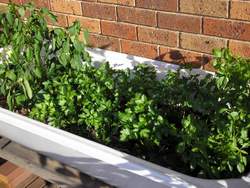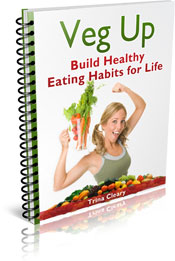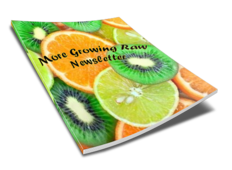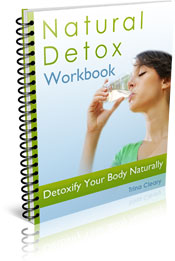|
Growing Vegetables in ContainersHow to Set Up a Container Vegetable Garden

The handy thing about growing vegetables in containers is that you can make food grow anywhere. You can create a vegetable garden even when you have no garden. Setting up a container vegetable garden enables you to make the most of your growing space and move your plants around into the ideal position. The advantages of planting vegetables in containers are:
The disadvantages of a container vegetable garden are that containers have less tolerance to drying out and require very regular feeding and watering. Permanent plantings may need potting up every 3-4 years.
Types of containersBasically you can use any large container that will hold soil and allow drainage. The container should be at least 20cm deep, deeper for vegetables that are heavy feeders like zucchini and tomato. Use your imagination, but you could use old bath-tubs, urns, baskets, large tin cans, big plastic bowls, old kettles, turned up hats and helmets, boots, old furniture (e.g. shelves or cupboard drawers), buckets, pots or window-boxes. What can you grow in a container vegetable garden?Basically you can grow anything given a large enough container, but you will probably need the ability to move the pot around. The larger the better for ease of feeding and watering, and larger containers can be placed on trolleys or rollers. Mixing and matching several vegetables in a larger container requires less maintenance than using several smaller containers. Select appropriate plants for the position you intend to use. Choose dwarf or miniature varieties that are self-fertilising and disease-resistant. Avoid deep-rooted (e.g. parsnips), slow-growing (e.g. brussel sprouts, cauliflower) or thirsty (e.g. pumpkin) vegetables so that you can make the most of your limited space. Zucchini, eggplant, tomato and potatoes can be grown in large containers. Zucchini especially makes an attractive container plant as it expands and its leaves overflow the sides. Herbs and flowers make an excellent container mix. Mixed salad greens are very well suited to containers, for example mizuna, mustard greens, baby spinach varieties and lettuce. You can plant your favourite mesclun mix and cut and come again any time you feel like eating salad. Stagger your planting so that you have an ongoing supply. Where you can put vegetable gardening containers?A container vegetable garden will prefer a sunny but sheltered position. Salad greens will tolerate partially shaded positions. Containers can be moved indoors for better shelter in winter or bad weather. Positions for vegetable gardening containers include decks, patios, balconies, tops of walls, windowsills, steps, tops of posts, courtyards, tables or the ground. Stylish vegetable container gardeningA container garden can be both edible and ornamental. You can create a good-looking theme or style using containers. Container gardening ideas are limited only by your imagination and how far away the nearest tip is. Use a row of matching containers (e.g. old tins, hats or boots). Vary the heights of your containers using steps, table-tops, walls or towers. Cluster smaller containers around the sheltering base of a large pot containing a fruit tree (e.g. fig, which likes root restriction). Under-plant your fruit trees with attractive herbs and salad greens. As a container garden is flexible you can change your garden view whenever you feel like it. Want a change of scenery? Just move your containers around. Container SoilDifferent vegetables have different soil requirements. Growing vegetables in containers allows you to get the potting mix just right for whatever vegetable crop you are going to grow. Heavy feeding vegetables will need a richer soil mix, as will fruit trees. Container DrainageGood drainage is important for a container vegetable garden. If you use good quality potting mix you shouldn’t need to line the base of the pot with gravel or rocks, but standing your containers on bricks or “feet” will assist better drainage. Container WateringWatering requirements will vary with the plant and season. However, containers are more prone to drying out than vegetable beds so water regularly. Many vegetables bolt when they get hot and dry, and your plants are more likely to have problems with pests and diseases if watering is irregular. Windy or hot weather necessitates extra watering, and remember that terracotta pots will dry out faster than plastic pots. It’s better to directly water the soil rather than the leaves. In hot weather, use the old trick of upending a plastic bottle filled with water into the container so that the water will gradually seep into the soil. Container FertiliserVegetables need good feeding with a fertiliser suited to the crop. Containers can be top dressed with compost and mulch and liquid fertiliser sprayed or watered on. The best fertiliser for growing vegetables in containers depends on the plant and the soil. Organic ContainersContainer gardens can be treated as organically as possible by using organic soil and compost and avoiding synthetic pesticides and fertilisers. Container Pests and DiseasesPrevention is better than the cure. Grow vegetables alongside pest-deterring (and edible) flowers such as calendula and nasturtiums. Keep your plants healthy with regular feeding and watering, as strong plants are less vulnerable. Overcrowded or pot-bound vegetables are also more prone to problems. Pick off pests and diseased leaves as soon as you notice them, and remove sickly plants. Treat with an organic pest control if necessary. Slugs and snails are less of a problem than usual when you’re growing vegetables in containers, but once they’re in it’s a feast! If you’re having problems with slugs and snails try setting a slug trap or creating a copper tape barrier around your containers. Growing vegetables in containers is a great way to get started growing your own food. You can start as big or small as you like.
|
Are you as healthy as you can be?
Take action to lift your energy and vitality levels beyond recognition.
Focus on
building healthy eating habits for just one month with
Veg Up and you’ll enjoy the effects for years. You will amaze yourself when you see how much more you can achieve.
More Growing Raw
Newsletter
Be sure to subscribe to "More Growing Raw" newsletter to receive monthly healthy eating tips, Growing Raw news and updates.
Most Popular Articles
- Green Smoothie Health
- Raw Food Health Levels
- Growing Vegetables in Containers
- Healthy Eating Plans
- List of Healthy Food to Always Eat Organic
- Growing a Vegetable Garden in a Polytunnel
- All Natural Detox Diet
Does your body need a fresh start?
Brighten up with all natural detox routines that give your body a cleansing push towards healthier patterns.
Learn how to
detoxify your body naturally. Your body is smart enough to clean itself without expensive detox pills and potions.








